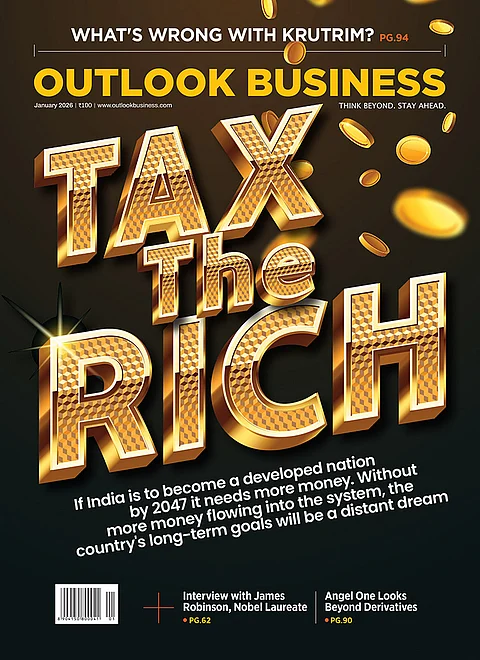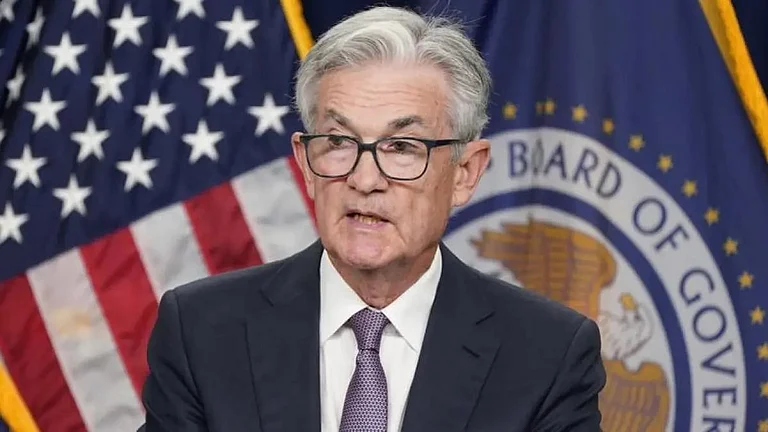US Federal Reserve chair Jerome Powell is expected to announce a 25 basis points(bps) rate cut at 2:30 ET on Wednesday but investors are concerned that a hawkish twist can reduce the pace of easing in 2025.
However, the Fed action tonight is expected to be a non-event for investors as a 25 bps rate cut is already priced-in by the market and the attention will be on the Fed commentary, experts suggest.
This time, the world’s most powerful central banker is expected to indicate a slower pace of interest rate cuts in the coming year, suggesting that Americans may witness only moderate relief from the current high borrowing costs for mortgages, auto loans and credit cards.
Fed is likely to announce a quarter-point cut to its benchmark rate, from around 4.6 per cent to 4.3 per cent, following a larger-than-usual half-point rate cut in September and a quarter-point reduction in November.
The Fed meeting could mark a change in the Fed’s strategy, moving away from rate cuts at each meeting to a more gradual approach, with cuts likely occurring at alternate meetings. Policymakers are expected to signal that they foresee only two or three rate reductions in 2025, a decrease from the four cuts previously anticipated three months ago, according to a report by the Associated Press.
The Fed has termed its actions so far as a “recalibration” of the exceptionally high rates that were initially set to curb inflation, which hit a 40-year high of 7.2 per cent in 2022. With inflation now significantly lower – at 2.3 per cent in October, according to Fed’s preferred measure, many Fed officials believe that rates need not remain so high.
However, inflation has remained above the Fed’s 2 per cent target in recent months, and the economy has continued to grow strongly. On Tuesday, a government report on retail sales revealed that Americans, particularly those with higher incomes, are still spending freely. This has raised concerns among analysts that further rate cuts could provide an overly strong boost to the economy potentially keeping inflation elevated.
While the immediate impact of a 25 basis points cut may seem minimal, the broader shift in the Fed’s strategy could signal slower monetary easing in 2025. Here’s how Fed’s policy will impact borrowing costs, savings returns, and investment strategies of common Americans:
Impact of Fed Rate Cuts on Loans and Credit Cards
The Federal Reserve’s rate cuts will reduce borrowing costs for consumers, affecting home loans, credit cards, auto loans and personal loans. Borrowing costs on 15-year fixed-rate mortgages, popular with homeowners seeking to refinance their home loan to a lower rate, is at an average rate of 5.84 per cent down from average of 6.38 per cent a year ago.
Other loan types, such as credit cards and auto loans, are more directly influenced by changes in the Fed’s policy rate. As a result, these rates are likely to decrease soon after any Fed rate reduction. However, a significant decline is not expected as the central bank is unlikely to cut rates dramatically.
Impact on Savings and Investments
For those with savings, a rate could have a negative effect. As the Fed increased policy rates, banks raised interest rates on high-yield savings accounts, but now, in anticipation of the rate cuts, they have started to lower those rates. As the Fed formally reduces rates, savers may see a decline in the returns on savings accounts and CDs.
On the investment front, lower interest rates usually help boost stock prices by making riskier investments more appealing. However, the overall impact will depend on other economic conditions as well.
Impact on Mortgages
While mortgage rates have decreased, housing affordability continues to be a challenge, with current conditions similar to those during the 2007-2009 financial crisis. Fed officials have noted that rate cuts will not immediately solve affordability issues but could stimulate more construction and home sales in the long term.
In addition, the primary factor driving high prices is the lack of housing supply, both for single-family and multi-family homes. Over time, reduced mortgage rates could help alleviate this pressure, potentially increasing housing availability and even leading to modest price declines in certain areas.































